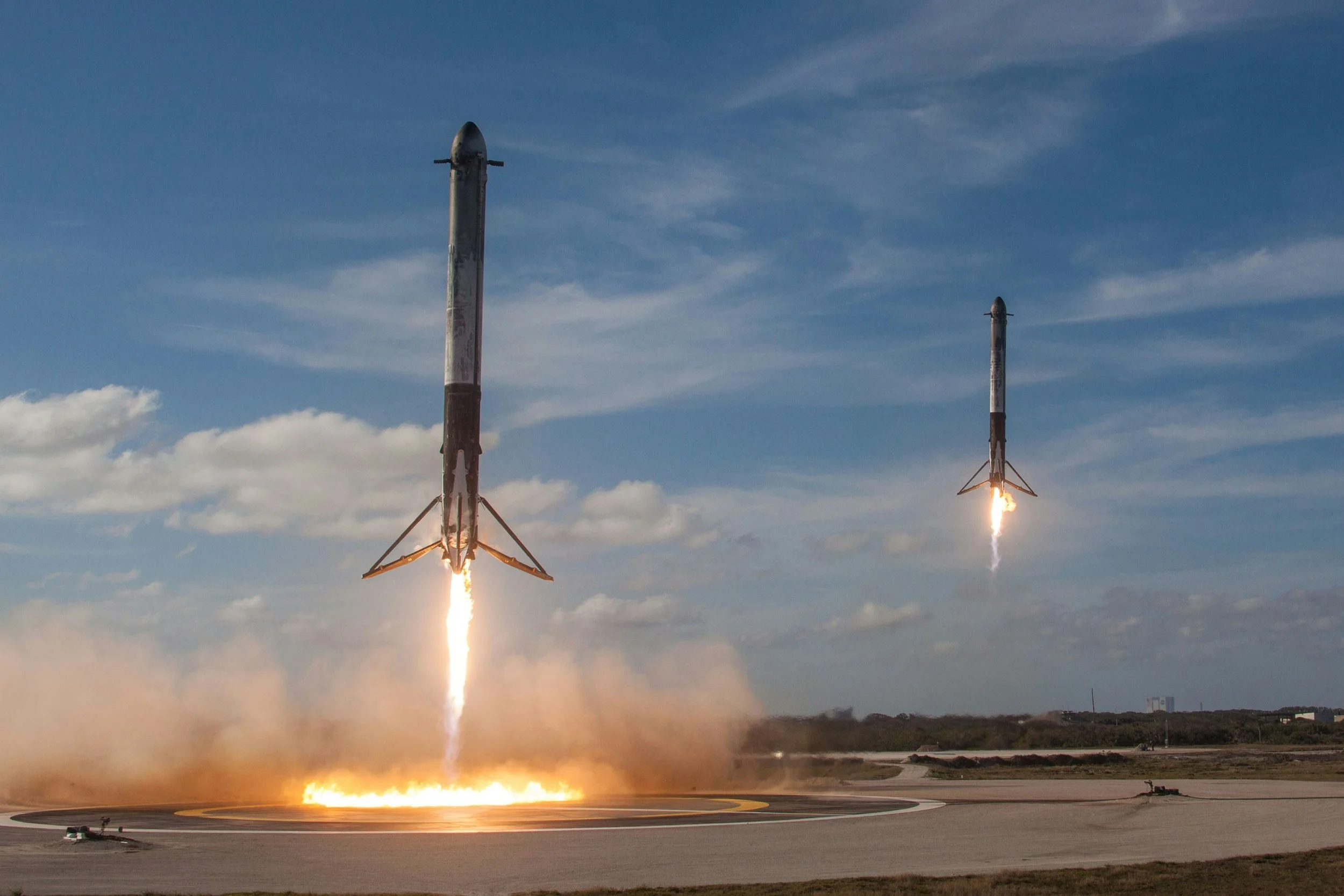Cadence Beats Payload in Launch Value Creation
SpaceX’s reusable rocket (Falcon Heavy) landing vertically at Kennedy Space Center, Merritt Island
Credit: SpaceX on Unsplash
Why learning curves—and not raw lift—drive enterprise value
In launch, bigger isn’t automatically better. What compounds value is cadence: the ability to fly often, collect telemetry, shorten refurbishment cycles and roll improvements into the next vehicle. High flight rate drives down cost per mission through learning effects, stabilises reliability via rapid feedback, and pulls revenue forward by converting backlog into cash sooner. Payload capacity matters, but without cadence the learning curve is shallow and capital stays trapped in inventory and work-in-progress.
Reusability turns cadence into a system property. A reusable booster with quick turnaround transforms launch from a project into a product: standardised operations, predictable timelines, and incremental upgrades. As Christensen’s disruptive innovation framework predicts, entrants that iterate faster can outlearn incumbents—even if initial performance is lower—because experience accrues with every flight. That experience shows up in faster pad operations, tighter quality control, and software advances across guidance, navigation and control.
For customers, cadence reduces schedule risk and enables more dynamic constellations. For operators, it means better asset utilisation and working-capital efficiency. For investors, it widens moats: telemetry, operational playbooks and refurbished hardware economies are hard to copy without similar flight counts.
Commercial Takeaways
Businesses should make turn-time, refurbishment cost, and flights-per-vehicle core metrics—optimise ground ops, automate inspection, and design for maintainability as fiercely as for thrust. Investors should value operators on executed flights, turnaround time trends and gross margin per launch more than on theoretical payload or paper backlog. Satellite operators should procure against service levels—launch windows, manifest agility, and in-orbit delivery certainty—hedging with multiple providers to keep cadence high. Policy-makers should streamline licensing and range logistics to increase launch availability, prioritising safety outcomes while removing friction that throttles flight rate.
